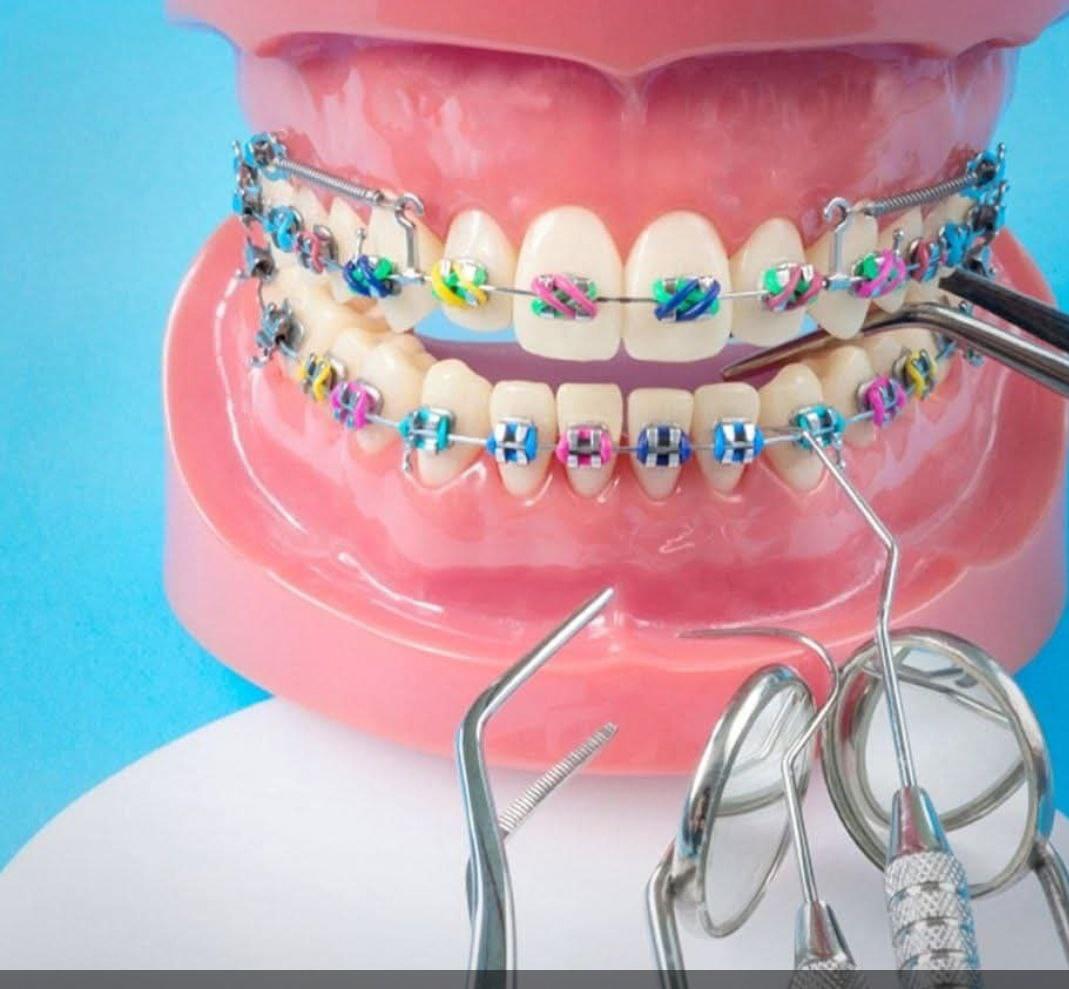

OsteoAngel

To visit
BRACES AND OSTEOPATHY
Braces (or brace systems) are metal structures on the jaws designed to change the position of teeth. Braces make teeth straight, improve smiles, correct malocclusion, and even address facial asymmetry.
However, there is another aspect – brace systems completely restructure the functioning of the facial skeleton. Why is this so?
Firstly, everything in our body is interconnected.
Secondly, the bones of the skull are mobile and set the biorhythm for the entire body, as first discussed by William Sutherland, the founder of cranial (craniosacral) osteopathy. Brace systems affect the position of the skull bones relative to each other, causing significant changes in body function and altering overall posture.
The upper jaw connects to seven bones in the skull. When tightened by braces, it changes the tension in the skull sutures: in some places, it becomes excessive, while in others, the sutures overstretch. Against the background of changes in suture tension, the following may occur:
- Headaches
- Neck pain
- Vision problems
- Nasal congestion
- Irritability
- Dizziness
- Reduced ability to concentrate
Regular discomfort in the body changes the emotional background, especially during adolescence: tearfulness, mood swings, and unexplained outbursts of aggression may appear.
The lower jaw is closely connected to the temporomandibular joint (TMJ), temporal bones, and the cervical spine. Braces on the lower jaw can also cause regular headaches and discomfort in the neck. The position of the neck changes under the influence of braces. And a change in neck position, in turn, leads to changes in posture – from slouching to scoliosis.
This does not mean that brace systems should not be used. However, it is important to consider the following recommendations:
- Before getting braces, consult not only an orthodontist but also an osteopath.
- An osteopath will assess the overall condition of your body and predict possible negative consequences of installing a brace system.
- Sometimes the specialist may recommend delaying the procedure or correcting the bite using a gentler method.
- Install braces no earlier than 13-16 years of age.
At this age, the skull is largely formed and resembles an adult's, so the side risks of braces are reduced. This is the osteopathic opinion; orthodontists recommend installing them earlier. While wearing braces, regularly (within a week after monthly brace adjustments) visit an osteopath. This is important for preventing complications. The osteopath helps the body adapt to the brace system and relieves excessive tension in the skull sutures.
After removing the braces, continue visiting the osteopath so that the body gets used to living with the new bite and without the usual pressure on the jaws and skull.
Take into account the fact that installing a brace system is a serious procedure that affects health and well-being. Therefore, it is important to carry it out under the supervision of both an orthodontist and an osteopath.
In countries where osteopathy is dynamically developing, the joint work of an orthodontist and an osteopath is a common practice.
In dentistry, under the influence of research in the field of craniosacral osteopathy, a new direction called cranio-orthodontics has even emerged.
Cranio-orthodontics studies how the dental system (tooth position, their absence, implants, bite, joint condition) affects the human skull.
Osteopathic Support in Orthodontics
When undergoing orthodontic treatment, osteopathic support is aimed at improving the overall effectiveness of therapy.
It helps to consider the relationship between craniofacial structures, the spine, and the general condition of the body. Here are the main aspects of how an osteopath can help:
1. Preparation for orthodontic treatment
The osteopath assesses and improves the balance of the skull bones, temporomandibular joint (TMJ), and cervical spine.
Eliminating dysfunctions helps create favorable conditions for installing braces or other orthodontic structures.
2. Relieving tension during brace use
Braces create pressure on the teeth, which can affect the skull bones, TMJ, and neck muscles.
The osteopath helps reduce discomfort by relieving excessive tension in these structures.
3. Correction of the temporomandibular joint
TMJ dysfunctions can interfere with proper tooth movement. The osteopath restores normal mobility and function of the joint.
4. Addressing the consequences of long-term treatment
Orthodontic treatment can lead to changes in the tone of the masticatory muscles. It is recommended to consult an osteopath.
An osteopath can provide significant assistance in comprehensive dental treatment, especially when it comes to problems related to the musculoskeletal system, jaw, or occlusion. Here are some areas where an osteopath can be helpful:
1. Temporomandibular joint (TMJ) dysfunction:
Helps eliminate jaw pain, clicking, or locking.
Improves joint mobility and reduces muscle tension.
Corrects disc displacement and jaw asymmetry.
2. Preparation for orthodontic treatment:
Supports the adaptation of the skull and jaw bones to orthodontic appliances (e.g., braces).
Reduces discomfort from tooth movement and speeds up recovery.
3. Rehabilitation after dental procedures:
After tooth extraction (e.g., wisdom teeth), helps restore balance in the maxillofacial area.
Relieves muscle tension after lengthy procedures.
4. Relieving headaches and tension:
If headaches are related to TMJ dysfunction, the osteopath can reduce their intensity.
Helps relieve tension in the neck and upper back related to dental issues.
5. Treating bruxism (teeth grinding):
Relaxes the jaw muscles and eliminates imbalances that may cause bruxism.
6. Addressing facial asymmetry:
Corrects soft tissues and skull bones to improve appearance and harmonize occlusion.
7. Preparation for implantation:
Ensures proper jaw positioning and optimal conditions for implant placement.
8. General relaxation and stress relief:
Since dental procedures often cause stress, osteopathic therapy can reduce tension and improve overall well-being.
The joint work of a dentist and osteopath is especially effective when a comprehensive approach to maxillofacial health is needed.
Respectfully, Anzhela Pripoten